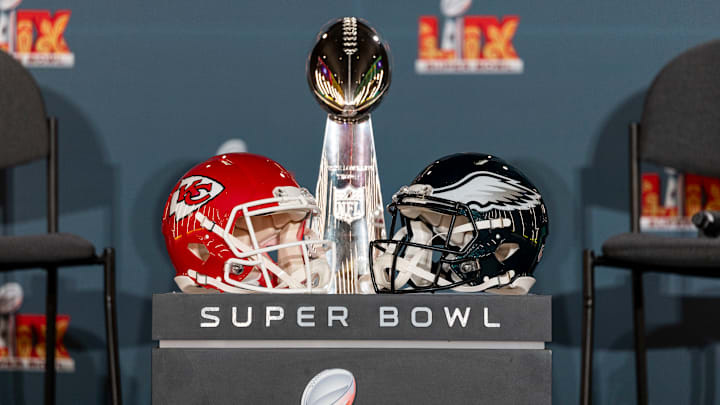One thing that's always fascinating about the Super Bowl is that there is normally so much more at play than the game itself. There are parties, there is food, there are commercials and, even more commonly this year than ever before, there are pools and contests like Super Bowl squares.
Even as sports betting has become exponentially more popular around the NFL in recent years, it's impossible to beat a good Super Bowl squares pool for this one game a year. It's simple, you don't require actual football knowledge to play if you want to have a good time at a Super Bowl party, and it can obviously pay out quite handsomely.
If you are a novice when it comes to Super Bowl squares, though, you might need some pointers both to figure out how it all works and also how good your chances are depending on what numbers you draw in your square. We've got all the answers you need right here.
How Super Bowl squares work
Super Bowl squares is a game played on a 10x10 grid with one team playing in the Big Game listed on one axis while the other team is listed on the other axis. The 100 total squares are then filled in with names claimed by the participants in the pool until they have all been accounted for.
At that point, the numbers 0-9 are then randomized across each axis to accompany a row or column. That means your square will have be an intersection point for a number from each team. Those are your numbers for Super Bowl squares and will be tied to the final digit for each team's score. To better visualize that as it pertains to Super Bowl LIX, if your square is at Chiefs 3 and Eagles 7 and the final score is Chiefs 23, Eagles 17, you would win!
Most Super Bowl squares pools, however, pay winners out at the end of each quarter. Some have even payouts for every quarter but some have progressive payouts based on the money in the pool. However, all of the winners in that case are still determined by your numbers, which do not change. So using the previous example, if the score was Chiefs 13, Eagles 7 at halftime, you would also win.
Got it? Great! Now let's go into what numbers that you're hoping to end up with since, you know, they're randomized and that leaves it all up to fate. However, if you end up with certain numbers, you're sitting pretty.
The best numbers for Super Bowl squares
This might sound obvious but the best numbers in Super Bowl squares are the key numbers in NFL games. Specifically, 0 and 0 are the best Super Bowl squares numbers to have according to the historical data. Given that a 0-0 tie, 10, and 20 are all key numbers, that tracks. And Establish the Run noted that you have a 6.8% chance of winning with both zeroes in your corner. Here's a look at the five best number combinations to have in your squares pool should you be so lucky based on the percentage chance of winning.
Super Bowl Squares Numbers | Percentage Chance of Winning |
|---|---|
0 and 0 | 6.8% |
7 and 0 | 6.0% |
3 and 0 | 4.7% |
7 and 7 | 4.5% |
7 and 3 | 3.6% |
Again, given the key numbers we know in football, that all makes sense. It's also worth noting that three of the No. 6-10 best options include 4 and either 0, 7 or 3, so that's not a bad draw either. However, this is just to win at the end of every quarter.
When talking about the progressive payout model, typically having the right Super Bowl squares numbers for the final score pays the most money to the winner. And the best numbers for the final score payout are a bit different as 7 and 0 are the best numbers for that with a 3.8% chance of winning in that. 7 and 4 is the only other combo with better than a 3% chance followed by 3 and 0, 4 and 0, 7 and 3, and 6 and 0 as the only combinations with 2% or more chance.
Why certain numbers are better for Super Bowl squares than others
As mentioned, the key numbers are what you want for Super Bowl squares. In case you didn't know why key numbers are key numbers, though, we've got you. It really comes down to the common scores what we see in NFL games.
Obviously, a touchdown and an extra point are worth seven points, which makes multiples of 7 a bit valuable. When you then factor in field goals, that's where you start to get higher numbers that end in 7, 4 and sometimes 3 or zero as well. Zeroes obviously have the value of being the starting score as well.
